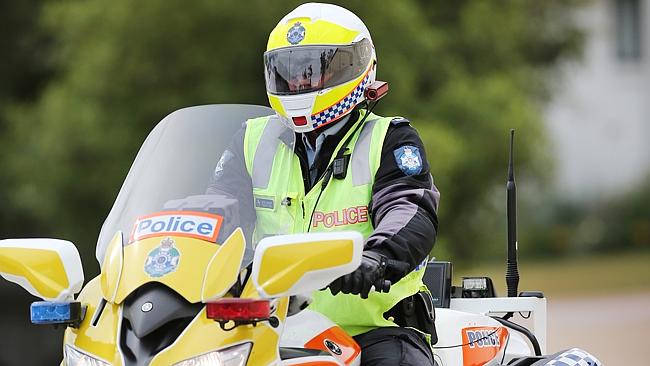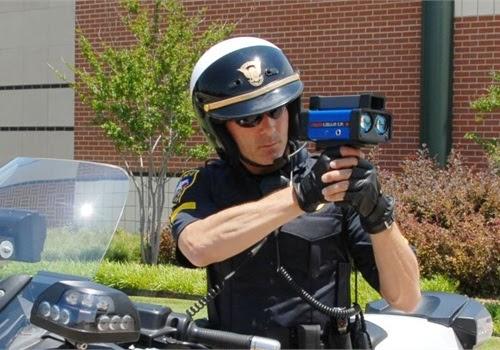In recent years, technology has become an integral part of modern policing. From dashcams in squad cars to body-worn cameras on patrol officers, law enforcement agencies increasingly rely on video recording devices to enhance accountability and transparency.
Yes, many police bikes have cameras. These cameras help record traffic violations, gather evidence, and protect both officers and the public by capturing events during patrols or incidents.
In this article we will discuss “Do Police Bikes Have Cameras”.
Table of Contents
The Rise of Cameras in Law Enforcement:

Cameras are now common for police, but this wasn’t always true. Body-worn cameras and dashcams were introduced to boost transparency and trust between police and the public.
They capture important evidence, help settle disagreements, and keep clear records of police interactions. This trend has also spread to police bikes.
Why Do Police Bikes Need Cameras?
Cameras on police bikes have many uses. Like those in patrol cars, they help capture evidence, keep officers safe, and promote transparency in police work.
Whether on a motorcycle or bicycle, officers often patrol busy areas or respond quickly to incidents, and cameras add an extra level of accountability.
Monitoring Traffic Violations:
One key role of police motorcycles is traffic enforcement. Mounted bike cameras can capture real-time footage of traffic violations, including speeding, illegal lane changes, and running red lights.
These cameras give officers visual evidence when issuing citations, making the enforcement process more efficient and less subject to dispute.
Enhancing Officer Safety:
Police officers on bikes face more risks than those in squad cars. Cameras record their interactions with the public, which is helpful in cases of aggression or non-compliance. The footage can support investigations and protect officers during critical incidents.
Types of Cameras Used on Police Bikes:
When it comes to police bikes, there are generally two types of cameras in use: mounted cameras and body-worn cameras. Each serves its own purpose, depending on the situation.
Mounted Cameras:
Mounted cameras on police motorcycles are positioned to capture the road ahead during patrols. They provide high-definition video and can record clearly in low light. Footage is stored on the bike or uploaded to the cloud for later review.
Body-Worn Cameras:
Officers on bicycles often use body-worn cameras. These cameras are attached to the officer’s uniform and record their interactions from a first-person view. They are helpful in busy areas where fixed cameras might miss important details.
How Police Use Camera Footage from Bikes?
Captured footage from police bike cameras serves many purposes. It acts as evidence in criminal investigations and traffic incidents. Supervisors can review the video or use it in court to explain what happened.
Investigations and Court Cases:
In legal cases, footage from police bike cameras can determine guilt or innocence. It helps resolve disputes over traffic violations and allegations of police misconduct, revealing the truth.
Training and Performance Review:
Police departments use bike camera footage to train new officers and evaluate current ones. Real-life recordings offer valuable lessons for law enforcement. By reviewing past encounters, officers can learn from mistakes and reinforce correct procedures.
Privacy Concerns and Legal Considerations:
Cameras on police bikes raise important privacy concerns, balancing accountability with individuals’ rights. Many areas have strict rules to ensure officers do not violate anyone’s privacy while using these cameras.
Data Security and Storage:
Police bike camera footage must be stored securely to prevent tampering or loss. Many departments use encrypted cloud storage, and proper data management is key to keeping video evidence safe.
Do police motorcycles have cameras?

Yes, many police motorcycles have cameras. These cameras record incidents and traffic violations and help ensure safety by providing video evidence during police work.
Do police bikes have cameras in california?
Yes, many police bikes in California have cameras. These cameras help officers record incidents and traffic violations and provide video evidence to support public safety and law enforcement efforts.
Do police bikes have cameras in texas?
Yes, many police bikes in Texas have cameras. These cameras help record traffic stops and incidents, provide video evidence to support officers, and enhance public safety during patrols.
Do police motorcycles have a dash cam?
Yes, some police motorcycles have dashcams. These cameras record traffic stops and incidents and provide important video evidence to help officers improve public safety during patrols.
Do police vehicles have cameras?
Yes, many police vehicles have cameras. These cameras record traffic stops and incidents and provide video evidence to help officers in their duties and increase public safety.
What do police on bikes do?
Police on bikes patrol neighbourhoods, manage traffic, respond to emergencies, and monitor public events. Their mobility allows them to access areas quickly and interact with the community more easily.
I got a speeding ticket from a motorcycle cop, how can I tell if he RADAR/LIDAR detected me?
Check your speeding ticket for details. It often mentions whether RADAR or LIDAR was used. You can also ask the officer or contact the issuing agency for more information.
Motorcycle cop camera:
A motorcycle cop camera records traffic stops, incidents, and interactions. These cameras help provide video evidence, improve safety, and support law enforcement in their daily duties.
Police motorcycle speed camera:
A police motorcycle speed camera measures vehicle speeds. It captures images of speeding drivers and helps officers issue tickets, improving road safety for everyone.
Do police motorcycles have radar?
Yes, many police motorcycles have radar. This radar helps officers measure vehicle speeds, allowing them to enforce speed limits and ensure safer roads for everyone.
Police motorcyclist with radar gun:
A police motorcyclist with a radar gun monitors vehicle speeds. If a driver is speeding, the officer can stop them and issue a ticket to promote road safety.
Can motorcycle cops radar while driving?
Yes, motorcycle cops can use radar while driving. This allows them to check the speed of vehicles as they patrol, helping to enforce speed limits and improve safety on the roads.
Do cops on bikes such as the CHP have radar mounted on their bikes?
Yes, cops on bikes, like those from the CHP, often have radar mounted on their motorcycles. This helps them monitor vehicle speeds while patrolling the roads effectively.
How do motorcycle cops clock your speed?

Motorcycle cops clock your speed using radar or LIDAR devices. These tools measure how fast your vehicle goes and help officers decide if you are speeding.
FAQs:
1. Do all police bikes have cameras?
Not all police bikes have cameras, but many modern police departments adopt them for added transparency and accountability.
2. How long is camera footage stored?
The duration of storage varies by department, but typically, footage is retained for 30 to 90 days unless it’s part of an ongoing investigation.
3. Can the public request camera footage from police bikes?
Yes, under Freedom of Information laws, the public can request footage, but certain restrictions apply, particularly if it involves an active investigation.
4. How do bike cameras differ from car dashcams?
While dashcams are stationary in vehicles, bike cameras are often smaller and can be mounted in various places or worn on the officer’s body, providing different angles of footage.
5. Are police bike cameras always recording?
Not always. Police bike cameras are typically activated during traffic stops, interactions with the public, or when the officer deems it necessary.
6. Can footage from police bike cameras be used in court?
Yes, footage from police bike cameras is often used as evidence in legal proceedings to provide an objective account of events.
7. Are there privacy concerns with police bike cameras?
Yes, some individuals may feel that law enforcement’s recording of them in public infringes on their privacy, leading to debates over the balance between security and privacy rights.
8. Can police bike cameras record at night?
Yes, many police cameras have night vision or low-light capabilities, allowing them to capture footage even in dark conditions.
Conclusion:
In conclusion, cameras on police bikes are becoming an essential tool in law enforcement. These cameras help officers monitor traffic violations, gather evidence, and enhance safety. Whether mounted on motorcycles or worn on the body, police bike cameras provide a crucial layer of transparency and accountability in modern policing.

